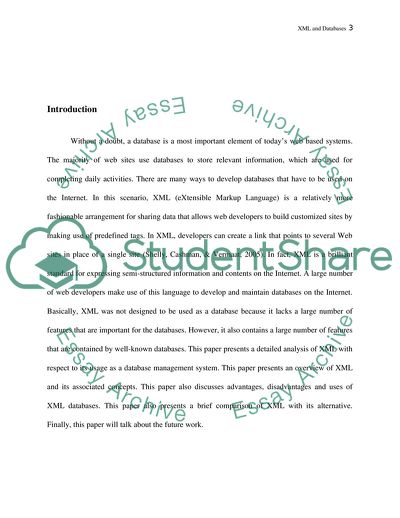Cite this document
(XML as Databases - Advantages and Concerns Essay Example | Topics and Well Written Essays - 5000 words, n.d.)
XML as Databases - Advantages and Concerns Essay Example | Topics and Well Written Essays - 5000 words. https://studentshare.org/information-technology/1857972-xml-and-databases
XML as Databases - Advantages and Concerns Essay Example | Topics and Well Written Essays - 5000 words. https://studentshare.org/information-technology/1857972-xml-and-databases
(XML As Databases - Advantages and Concerns Essay Example | Topics and Well Written Essays - 5000 Words)
XML As Databases - Advantages and Concerns Essay Example | Topics and Well Written Essays - 5000 Words. https://studentshare.org/information-technology/1857972-xml-and-databases.
XML As Databases - Advantages and Concerns Essay Example | Topics and Well Written Essays - 5000 Words. https://studentshare.org/information-technology/1857972-xml-and-databases.
“XML As Databases - Advantages and Concerns Essay Example | Topics and Well Written Essays - 5000 Words”. https://studentshare.org/information-technology/1857972-xml-and-databases.


